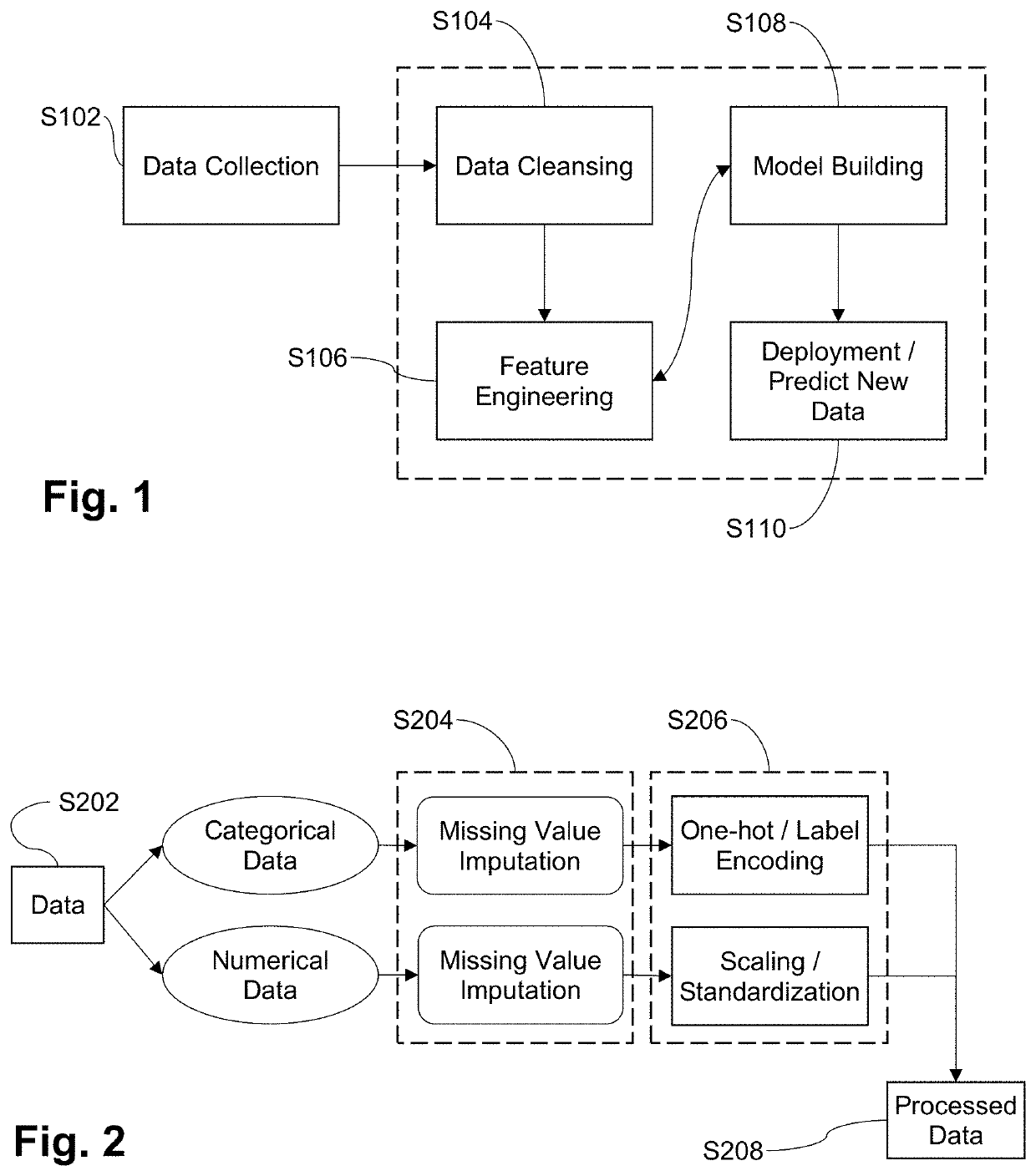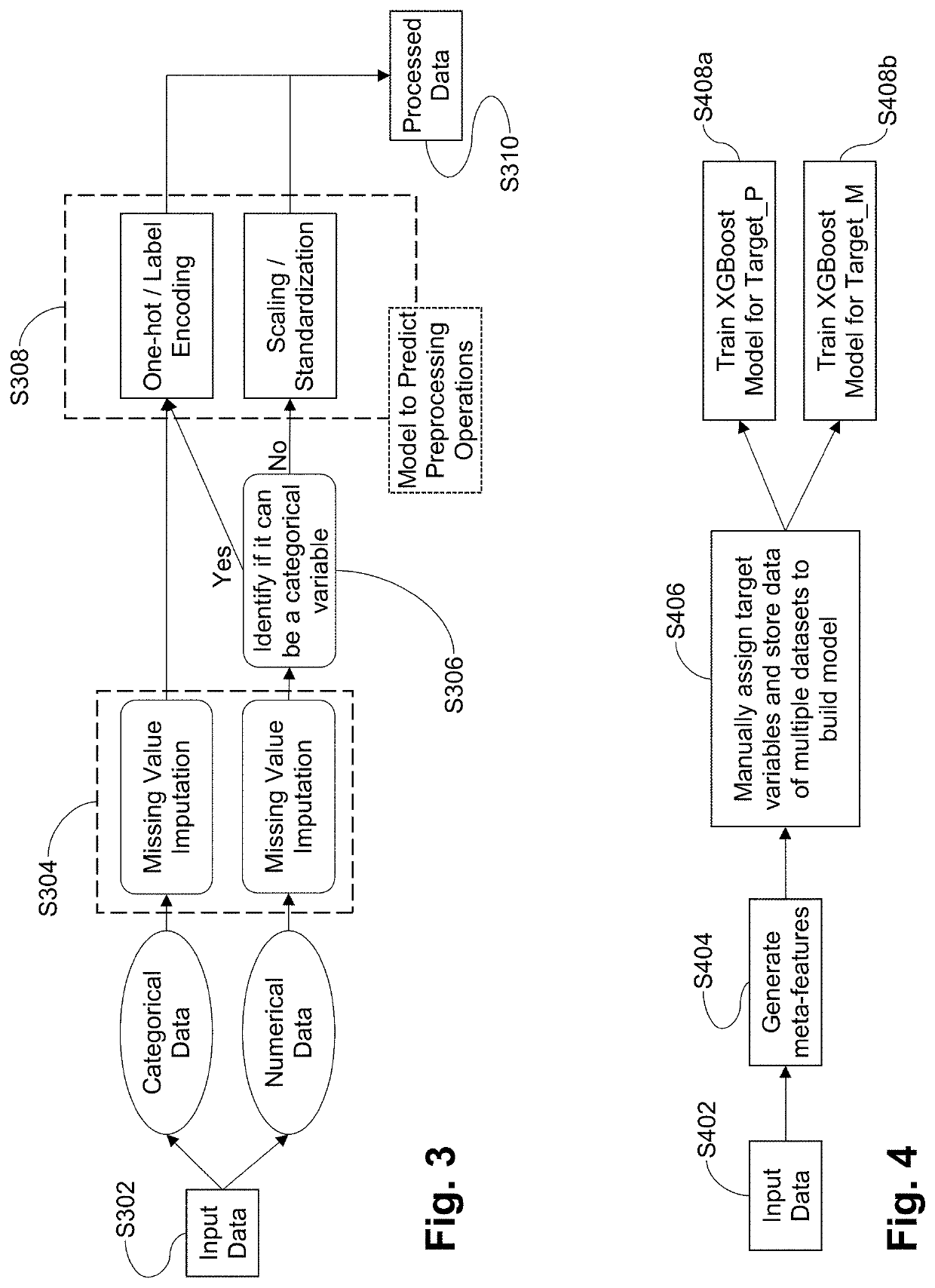Techniques for automated data cleansing for machine learning algorithms
- Summary
- Abstract
- Description
- Claims
- Application Information
AI Technical Summary
Benefits of technology
Problems solved by technology
Method used
Image
Examples
example implementation
[0043]Details concerning an example implementation are provided below. It will be appreciated that this example implementation is provided to help demonstrate concepts of certain example embodiments, and aspects thereof are non-limiting in nature unless specifically claimed. For example, descriptions concerning example code, classifiers, classes, functions, data structures, data sources, etc., are non-limiting in nature unless specifically claimed.
[0044]Certain example embodiments involve data cleansing being performed in two independent tasks, namely, missing value imputation and selection of preprocessing steps. FIG. 4 is a flowchart providing an overview of model training performed in connection with the data cleansing approach of certain example embodiments. That is, in step S402, data is received and, to implement this approach, certain example embodiments begin with preparing the dataset of meta-features extracted from different datasets, and storing them in tabular format, as...
PUM
 Login to View More
Login to View More Abstract
Description
Claims
Application Information
 Login to View More
Login to View More - R&D
- Intellectual Property
- Life Sciences
- Materials
- Tech Scout
- Unparalleled Data Quality
- Higher Quality Content
- 60% Fewer Hallucinations
Browse by: Latest US Patents, China's latest patents, Technical Efficacy Thesaurus, Application Domain, Technology Topic, Popular Technical Reports.
© 2025 PatSnap. All rights reserved.Legal|Privacy policy|Modern Slavery Act Transparency Statement|Sitemap|About US| Contact US: help@patsnap.com



